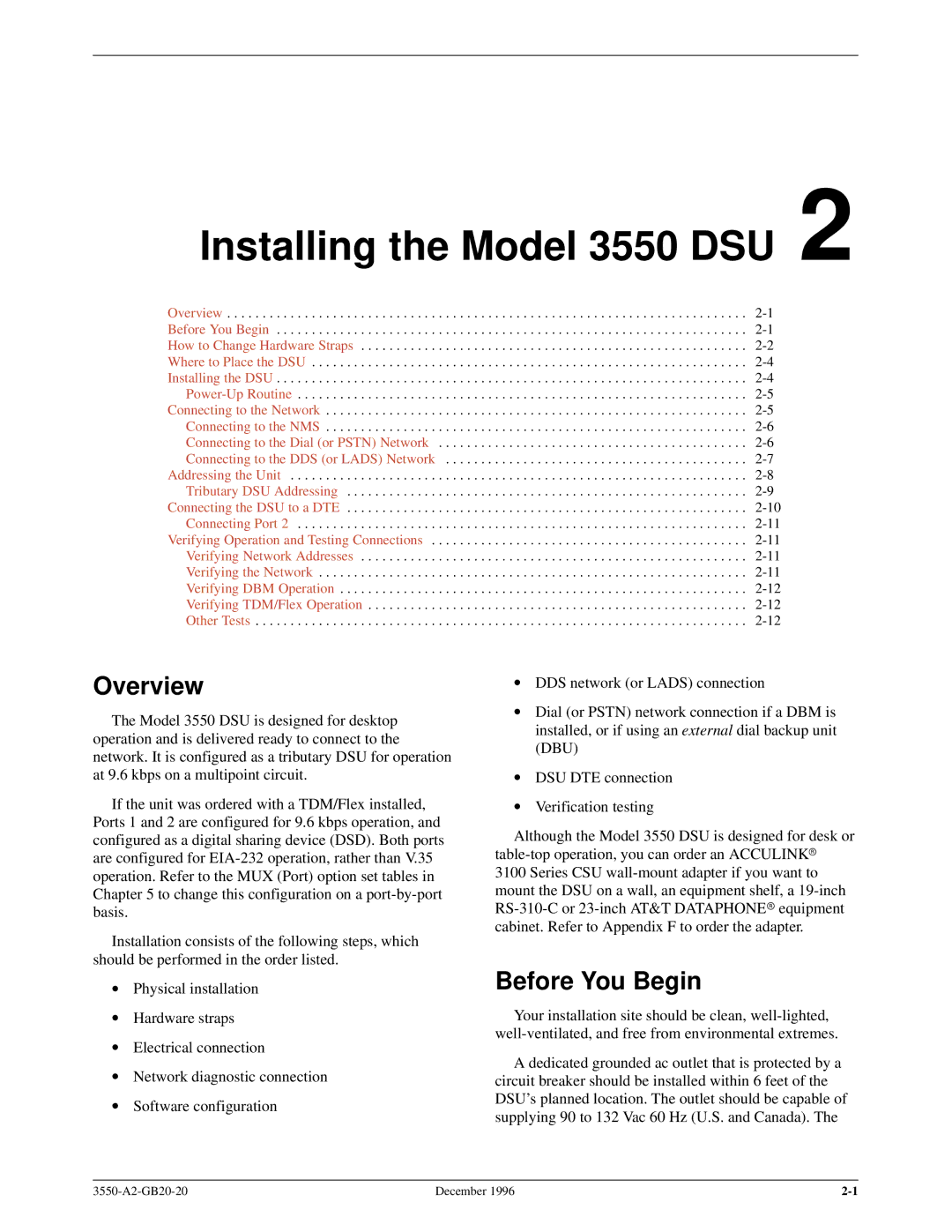
Installing the Model 3550 DSU 2
Overview | |
Before You Begin | |
How to Change Hardware Straps | |
Where to Place the DSU | |
Installing the DSU | |
Connecting to the Network | |
Connecting to the NMS | |
Connecting to the Dial (or PSTN) Network | |
Connecting to the DDS (or LADS) Network | |
Addressing the Unit | |
Tributary DSU Addressing | |
Connecting the DSU to a DTE | |
Connecting Port 2 | |
Verifying Operation and Testing Connections | |
Verifying Network Addresses | |
Verifying the Network | |
Verifying DBM Operation | |
Verifying TDM/Flex Operation | |
Other Tests |
Overview
The Model 3550 DSU is designed for desktop operation and is delivered ready to connect to the network. It is configured as a tributary DSU for operation at 9.6 kbps on a multipoint circuit.
If the unit was ordered with a TDM/Flex installed, Ports 1 and 2 are configured for 9.6 kbps operation, and configured as a digital sharing device (DSD). Both ports are configured for
Installation consists of the following steps, which should be performed in the order listed.
•Physical installation
•Hardware straps
•Electrical connection
•Network diagnostic connection
•Software configuration
•DDS network (or LADS) connection
•Dial (or PSTN) network connection if a DBM is installed, or if using an external dial backup unit (DBU)
•DSU DTE connection
•Verification testing
Although the Model 3550 DSU is designed for desk or
3100 Series CSU
Before You Begin
Your installation site should be clean,
A dedicated grounded ac outlet that is protected by a circuit breaker should be installed within 6 feet of the DSU's planned location. The outlet should be capable of supplying 90 to 132 Vac 60 Hz (U.S. and Canada). The
December 1996 |
